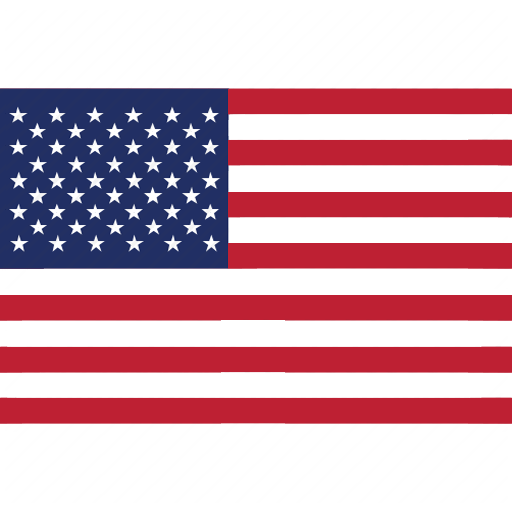Chemicals | Monthly bulletin | August 2025


New requirements for PFOS, UV-238 and PFAS in POP Regulation
In June and July 2025, the European Commission published several Delegated Regulations which amend the Annex I – Part A of Regulation (EU) 2019/1021 as regards persistent organic pollutants and substances as PFOS, EV-238 and PFAS. Below a summary table with relevant points, it is not exhaustive list, related to these substances and their new requirements.
|
Date |
Delegated Regulation |
Substance |
Main changes |
Enter in force date |
|
25/06/2025 |
Perfluorooctane sulfonic acid (PFOS), its salts and PFOS-related compounds C8F17SO2X
|
New limits:
1. Concentrations of PFOS or any of its salts equal to or below 0,025 mg/kg (0,0000025 % by weight) where they are present in substances, mixtures or in articles.
2. The sum of concentrations of all PFOS-related compounds equal to or below 1 mg/kg (0,0001 % by weight) where they are present in substances, mixtures or articles.
|
17/07/2025 |
|
|
14/07/2025 |
Perfluorooctanoic acid (PFOA), its salts and PFOA-related compounds |
The following points are inserted in this entry:
4a. Concentrations of PFOA or any of its salts equal to or below 1 mg/kg (0,0001 % by weight) and to concentrations of any individual PFOA-related compound or combination of PFOA-related compounds equal to or below 10 mg/kg (0,001 % by weight) where they are present in fire-fighting foam for liquid fuel vapour suppression and liquid fuel fire (Class B fires) already installed in systems. This limit value shall apply until 3 August 2028.
4b. The sum of the concentration of PFOA, its salts and PFOA-related compounds equal to or below 10 mg/kg (0,001 % by weight) where they are present in fluorine-free fire-fighting foam and originate from fire-fighting equipment which has undergone cleaning in accordance with the best available techniques. |
03/08/2025 |
|
|
15/07/2025 |
2-(2H-benzotriazol-2-yl)-4,6-di-tert-pentylphenol (UV-328) |
This new entry is added.
The limits for substances, mixtures or articles are: a) ≤ 100 mg/kg (0,01 % by weight) from 4 August 2025; b) ≤10 mg/kg (0,001 % by weight) from 4 August 2027; c) ≤1 mg/kg (0,0001 % by weight) from 4 August 2029; |
04/08/2025 |
|
|
Note: To see all the changes and new requirements, please refer to the official publication in the links for each delegated regulations in this table. |
||||
New explanatory guide for microplastics restriction
On the 18th of July 2025, the European Commission published the Microplastics explanatory guide to help and clarify the application of the restriction of Annex XVII to Regulation (EC) No 1907/2006 related to synthetic polymer microparticles (the microplastics restriction). This guide consists of:
- A narrative section (Part I)which describes in simple terms the provisions and the intended implementation of the restriction. In 22 EU official languages.
- A set of ‘questions and answers’ (Part II)which compiles replies provided to EU countries’ and stakeholders’ questions (only in English)
- Annexes (Part III)with decision trees and examples of borderline cases. (Only in English).
For more information, consult the European Commission website here.
New business plan for chemical industry in Europe
On the 8th of July 2025, the European Commission the Commission presented its sectoral plan for the chemical industry with one objective of ensuring the future of European chemistry.
The four main points are:
- Supporting the European production system, with the creation of a new "Critical Chemicals Alliance" focus on the most critical molecules and sites.
- Lowering energy prices and supporting industry in its decarbonization.
- Supporting demand, with the introduction of European content and sustainability criteria in public and private procurement.
- Providing more clarity on PFAS.
On the other hand, the European Commission adopted a sixth simplification Omnibus to reduce compliance costs and administrative burden for the chemical industry while ensuring strong protection of human health and the environment.
For more information, the European commission has available the following information related this topic:
Updated the Endocrine Disruptor lists
In June 2025, the European Endocrine Disruptor lists were updated. There are three lists:
- List I: Substances identified as endocrine disruptors at EU level (PPPR, BPR or REACH);
- List II: Substances currently being assessed for their endocrine-disrupting potential under European legislation;
- List III: Substances considered by the national assessment authority to have endocrine-disrupting properties.
These lists are updated at least bi-annually.
The aim of this website is to inform about the current status of substances identified as endocrine disruptors (EDs), or under evaluation for endocrine disrupting properties within the EU.
This site is administered, on behalf of all participating national authorities (Belgium, Denmark, France, The Netherlands, Sweden and Spain), by The Danish Environmental.
The list complete is available in the Endocrine Disruptor lists website here.
New publications related to batteries
In July 2025, the European commission published several publications related to batteries and the new requirements. The relevant publications are:
- Commission Delegated Regulation (EU) 2025/606 of 21 March 2025 supplementing Regulation (EU) 2023/1542 of the European Parliament and of the Council by establishing the methodology for calculation and verification of rates for recycling efficiency and recovery of materials from waste batteries, and the format for the documentation.
- REPORT on the proposal for a regulation of the European Parliament and of the Council amending Regulation (EU) 2023/1542 as regards obligations of economic operators concerning battery due diligence policies.
- Simplification: Council adopts law to ‘stop-the-clock’ on due diligence rules for batteries.
Recent publications on REACH Regulation
The following table provides a non-exhaustive summary of some recent updates regarding REACH Regulation (EC) No 1907/2006:
|
Summary of the most recent updates |
||
|
Date |
Subject |
Link |
|
18/06/2025 |
Publication of the evaluation of the proposed restriction on PFAS and an opinion on the occupational exposure limit (OEL) of Bisphenol A to protect workers. |
For more information consult the ECHA website here. |
Interesting resources on REACH Regulation on the ECHA’s website
- Registry of restriction intentions until outcome - ECHA (europa.eu)
- Registry of SVHC intentions until outcome - ECHA (europa.eu)
- Substance evaluation - CoRAP - ECHA (europa.eu)
- Adopted opinions and previous consultations on applications for authorisation - ECHA (europa.eu)
- Applications for authorisation - current consultations - ECHA (europa.eu)
- Current calls for comments and evidence - ECHA (europa.eu)
- Authorisation List - ECHA (europa.eu)
- ECHA's completed activities on restriction
- Submitted restrictions under consideration
- Assessment of regulatory needs list
Interesting resources on the CLP Regulation on the ECHA’s website
- Registry of CLH intentions until outcome - ECHA (europa.eu)
- Harmonised classification and labelling consultations - ECHA (europa.eu)
European initiatives related to hazardous chemicals
The table below summarises recent publications on the European Commission initiatives and their status regarding:
|
Date |
Title |
|
14/07/2025 |
Export and import of hazardous chemicals
The European Commission opened the feeback period related to a draft act on the export and import of hazardous chemicals implements the Rotterdam Convention and one specific element of the Stockholm Convention, i.e. the obligations of parties as regards the export of persistent organic pollutants (POPs). |
Minnesota Amends PFAS Law
In 2023, the State of Minnesota passed HF 2310 (Chapter 60) to regulate intentionally added PFAS in various consumer product categories. On June 14, 2025, Minnesota passed SF 3, amending its PFAS law to clarify exemptions in product scope and application.
Key Provisions of the Original Law (HF 2310)
- Phase I (Effective Jan 1, 2025): Bans products with intentionally added PFAS in 11 specified categories, including:
- carpets/rugs
- cleaning products
- cookware
- cosmetics
- dental floss
- fabric treatments
- juvenile products
- menstruation products
- textile furnishings
- ski wax
- upholstered furniture
- Phase II (Starting Jan 1, 2026): Requires manufacturer disclosure of PFAS use:
- Including names, CAS numbers, purposes, and amounts.
- Phase III (Effective Jan 1, 2032): Extends PFAS ban to all products, except those deemed a “currently unavoidable use” by rule; certain exemptions apply (e.g., FDA-regulated medical devices, firefighting foam, reused products).
Amendments Under SF 3
- Expanded Exemptions for Phase I (2025):
- "Intentionally added PFAS located only in electronic components or internal components" are now exempt from the 2025 ban, to be phased in later by 2032 if deemed avoidable or phased out.
- Juvenile product definition clarified to exclude children’s motor vehicles (e‑bikes, snowmobiles, ATVs) and their replacement parts.
Minnesota Expands Exemptions to State Lead & Cadmium Ban
In 2023, the State of Minnesota originally enacted HF 2310 (Chapter 60), which banned the import, manufacture, sale, or distribution of the following 15 product categories containing lead over 90 ppm or cadmium over 75 ppm:
- Chalk, crayons, paints and other art supplies
- Clothing, footwear, headwear and accessories
- Cosmetics and personal care products
- Costumes, costume accessories and children’s and seasonal party supplies
- Craft supplies and jewelry-making supplies
- Cups, bowls and other food containers
- Fidget spinners
- Jewelry
- Keys, key chains and key rings
- Outdoor games
- Play sets and play structures
- Pots and pans
- Puzzles, board games, card games and similar games
- School supplies
- Toys
On June 14, 2025, Minnesota approved HF 4, introducing important exemptions to its lead and cadmium law, effective June 15, 2025.
Key Newly Exempted Items
- Ink pens and mechanical pencils are no longer classified as “school supplies” under the statute
- The term “paints” in the art supplies category is restricted to children’s paints only.
- Professional artist materials—such as oil-based and water-based paints, pastels, pigments, ceramic glazes, markers, and encaustics—are now excluded.
- Products containing lead only in internal solder are exempt until July 1, 2028, but manufacturers must submit biennial reports about alternatives and phase-out plans thereafter.
- Keys, key chains, and key rings with lead content are exempt if available before July 1, 2028. Even after that date, keys with at least 1.5% lead content remain permitted.
- Cast iron or steel pots and pans are exempt if lead is ≤90 ppm and cadmium is in the enamel, so long as the enamel does not come into contact with food.
Bans Import and Export of several kinds of consumer goods content mercury
On 16 June, 2025, the Macau Printing Bureau announced a new local regulation Chief Executive's Decision No. 109/2025. This regulation is bans Specific product with Mercury (Hg) content import, export, and transshipment to the Macao Special Administrative Region.
- The import, export and transit of the following mercury-added products covered by the Minamata Convention on Mercury and its amendments shall be prohibited:
- Batteries;
- Switches and relays;
- Compact fluorescent lamps (CFL) for general lighting;
- The following linear fluorescent lamps (LFL) and non-linear lamps for general lighting (e.g. U-shaped and circular):
- Match triband, all powers;
- Phosphorus halophosphates, all powers;
- High-pressure mercury vapor (HPMV) lamps for general lighting;
- Cold-cathode fluorescent lamps and external electrode fluorescent lamps (CCFL and EEFL) for electronic electronics;
- Cosmetics, including soaps and creams to whiten the skin, excluding cosmetics for application to the eye area that use mercury as a preservative where there are no effective and safe alternative preservatives;
- Pesticides, biocides and topical antiseptics;
- The following non-electronic measuring devices:
- Barometers;
- Hygrometers;
- Pressure gauges;
- Thermometers;
- Sphygmomanometers;
- Extensometers, to be used with plethysmographs;
- The following electrical and electronic measuring apparatus:
- Fusion pressure transducers;
- Fusion pressure transmitters;
- Fusion pressure sensors;
- Mercury vacuum pumps;
- Tire gauge and wheel weights;
- Film and photographic paper.
- The prohibition referred to in the preceding paragraph shall not apply to mercury-added products intended for use in research and instrument calibration or to serve as reference standards.
- This Order shall enter into force on 1st January 2026.
















































